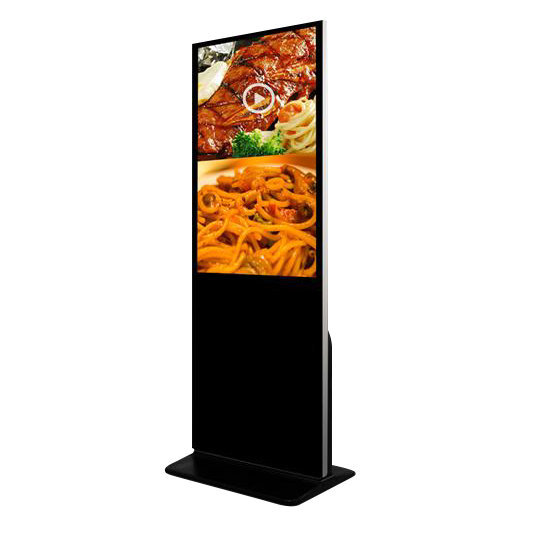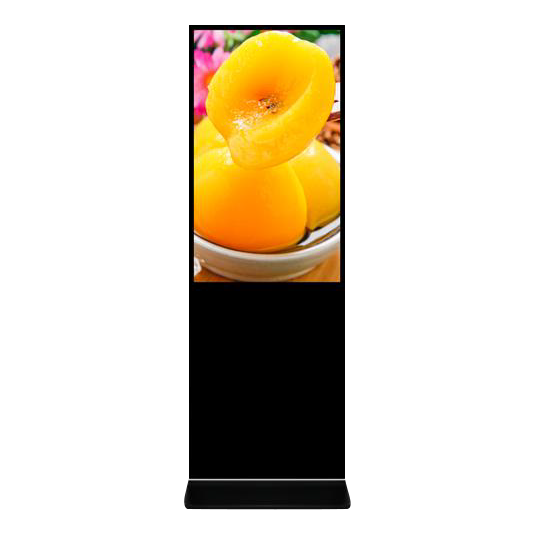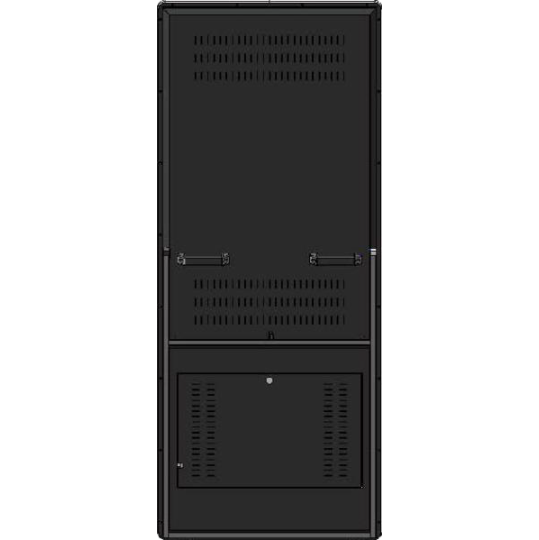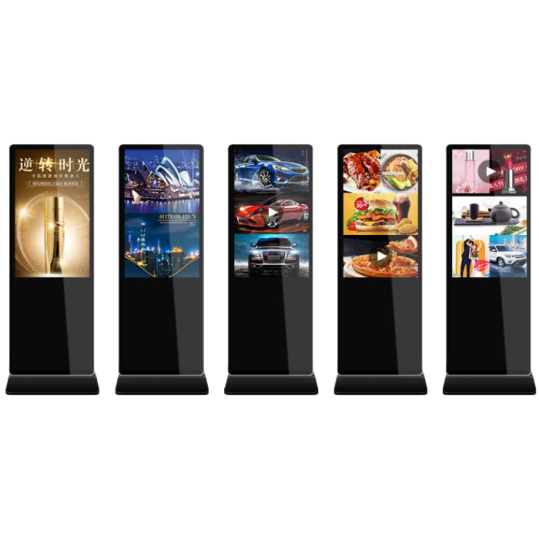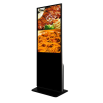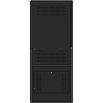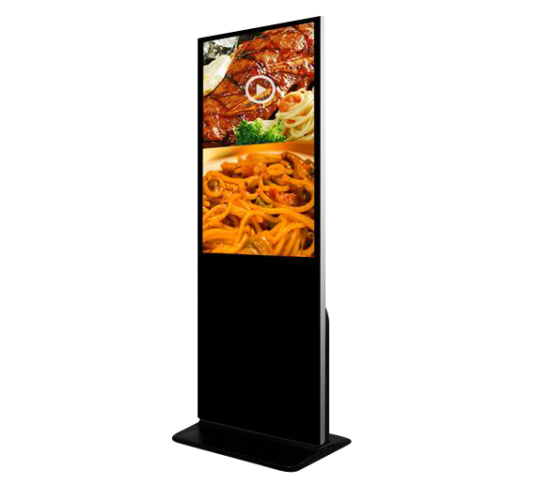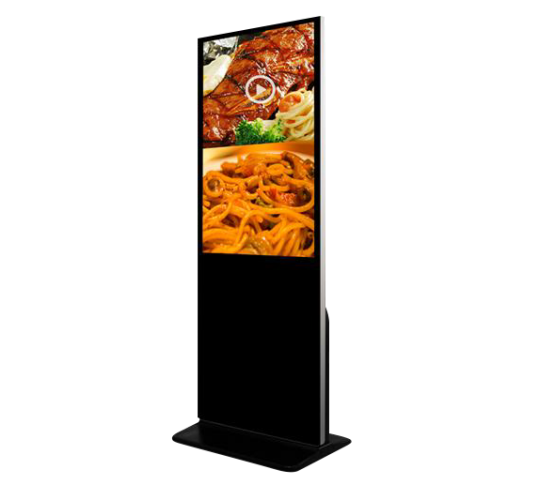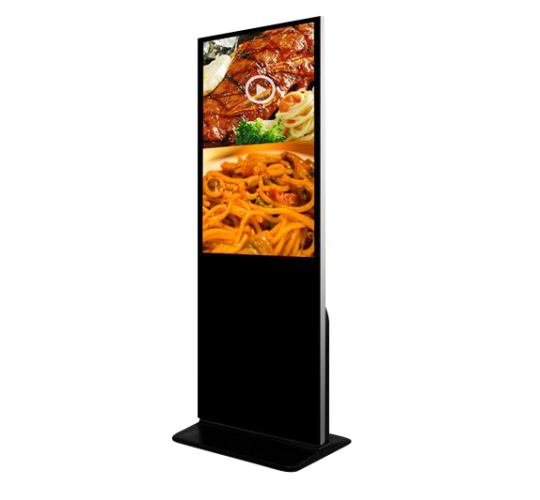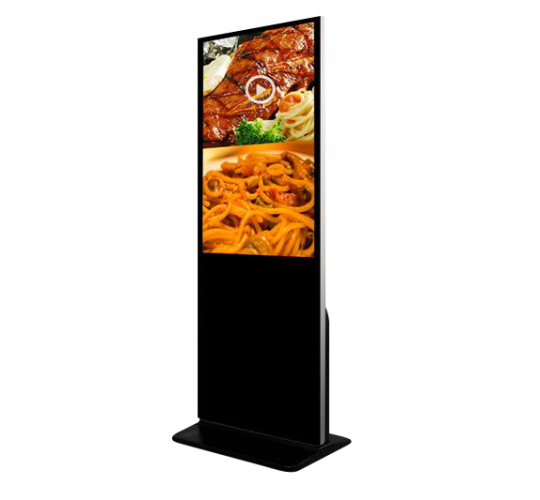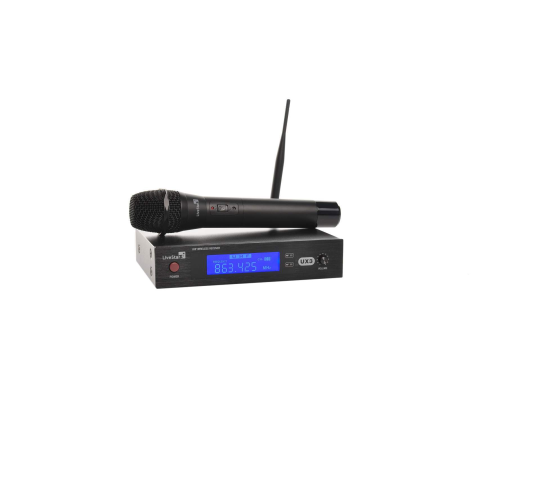AVL V-ST55 55" free standing touch display
- Home
- Video
- Displays
- Interactive
- AVL V-ST55 55" free standing touch display

Free-standing display with infrared touch screen.
| Display size | 55” |
| Resolution | 1080 (H) × 1920 (V) |
| CPU | Rockchip RK3288 quad-core 1.8GHz Cortex-A17 quad-core gpu Mail-t764 |
| System version | Android 9 |
| Audio | Stereo output, built-in dual 8Ω/5W power amplifier |
| Ports | 1x HDMI in, 1x HDMI out, 2x USB 2.0, 1x RJ45, WiFi 2.4 GHz, Bluetooth 4.0, 3x TTL |
| Net weight | 45.9 kg |
NEXT GENERATION OF FREE-STANDING BANNERS
AVL “V-Stand Touch” is a contemporary alternative to old-fashioned roll-up banners – still as convenient, portable and easy to use, but with many more advantages. Device features internal computer with wide array of connectivity and Android OS. From simple plug-and-play operation to complex advertising network integration – “V-Stand Touch” will give a robust and stable performance for years to come.
WIDE RANGE OF USES
AVL “V-Stand Touch” can be used in many different ways from simple plug-and-play information stand to interactive multimedia kiosk. Device supports easy screen splitting for flexible ways to display information or advertising. There is no need to connect to an external computer (although it can be), as “V-Stand Touch” has its own CPU with Android OS, and can be used anywhere standalone.
INTERACTIVITY
Thanks to the infrared-touch sensitive display, “V-Stand Touch” can be used for interactive media purposes. Product catalog browsing, interactive maps, form submissions, virtual helpdesk – possible uses range from advanced customer experience to accessibility needs for disabled.
CONNECTIVITY
“V-Stand Touch” features a wide array of connections for network, user input and output devices, video and audio signals. It ensures flexibility and compatibility with other non-proprietary equipment that can be used to expand “V-Stand Touch” features or user experience even further.
REMOTE MANAGEMENT AND MONITORING
“V-Stand Touch” display can be controlled and monitored remotely via wired or wireless connections. Typical uses would include updating displayed information, adjusting volume or switching device on or off completely. More advanced uses include remote upgrading, troubleshooting and system monitoring.
